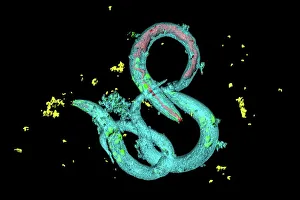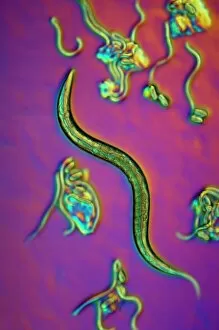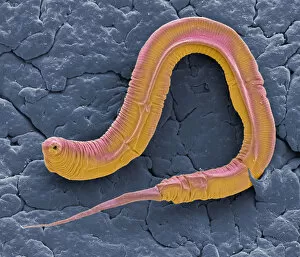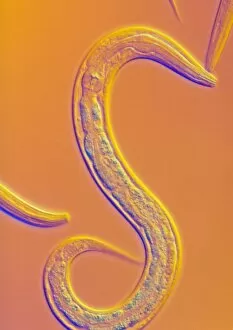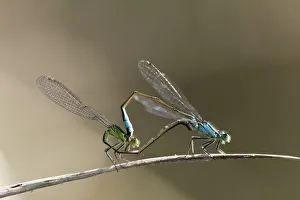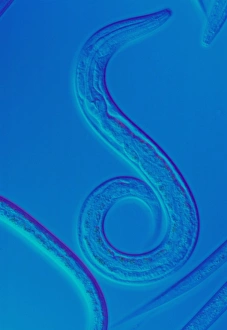Caenorhabditis Elegans Collection
"Exploring the Intricacies of Caenorhabditis elegans: A Journey into a Tiny Worm's World" Caenorhabditis elegans, commonly known as C
All Professionally Made to Order for Quick Shipping
"Exploring the Intricacies of Caenorhabditis elegans: A Journey into a Tiny Worm's World" Caenorhabditis elegans, commonly known as C. Elegans worms, are microscopic organisms that have captivated scientists for decades. With their transparent bodies and simple anatomy, these tiny creatures offer an unparalleled opportunity to study fundamental biological processes. In this captivating light micrograph, we get a glimpse into the intricate world of C. Elegans worms. Their slender bodies twist and turn, revealing the elegance in their simplicity. These remarkable creatures possess unique characteristics that make them invaluable in scientific research. Moving on to another stunning image captured by scanning electron microscopy (SEM), we encounter the Red-eared Slider Turtles (Trachemys scripta elegans). Though unrelated to our worm friends, they share a similar name - highlighting the diversity found within nature's realm. Returning our focus to C. Elegans worms themselves, we witness their graceful form through various illustrations and micrographs. From SEM images showcasing their delicate features to light micrographs capturing their ethereal beauty - each snapshot unveils new details about these fascinating organisms. Venturing beyond land-dwelling creatures, we stumble upon a mesmerizing sight in the Indian Ocean's depths – a Red-knobbed star (Fromia elegans) resting on Pore Coral. Nature never ceases to amaze us with its vibrant colors and symbiotic relationships between species. Meanwhile, in Bavaria's serene landscapes of Germany lies yet another enchanting scene – a mating pair of Blue-tailed Damselflies (Ischnura elegans). These delicate insects exemplify nature's harmonious dance as they come together during courtship rituals. Lastly, exploring deeper aspects of biology through illustrations depicting anterior-posterior polarity reminds us how intricately orchestrated life is at its core. The precise organization seen in C. elegan’s body plan serves as an inspiration for scientists studying development and genetics.

